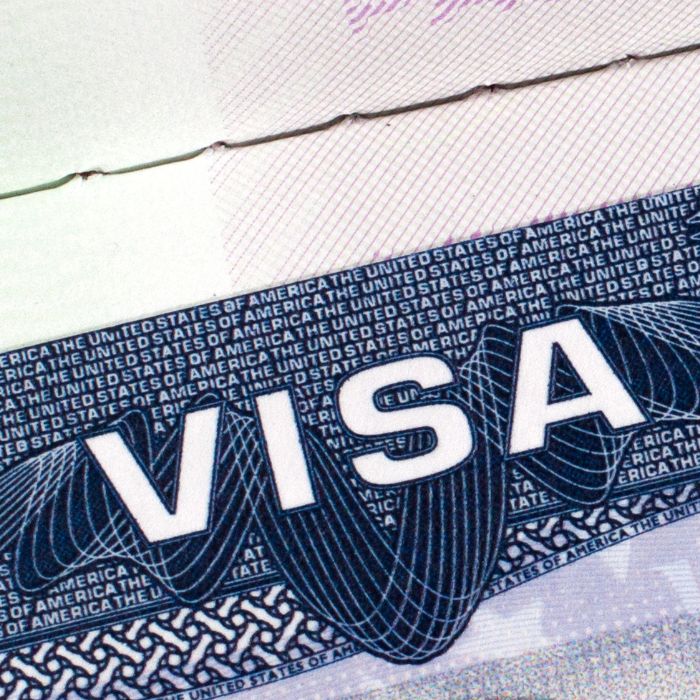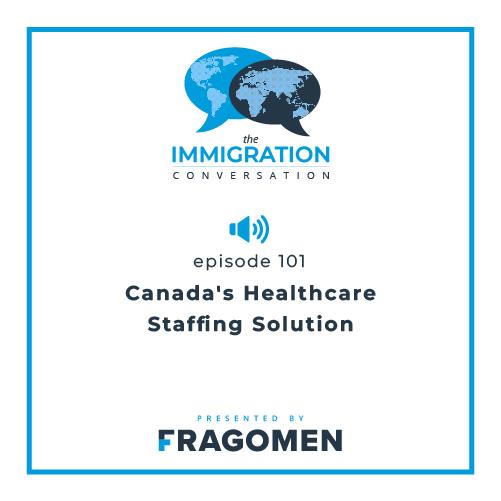The Compliance Paradox: Why Immigration Compliance Must Become Strategic Governance
November 17, 2025
The modern employer faces a paradox that defines the future of immigration compliance. Laws written for a twentieth-century industrial economy now regulate twenty-first-century enterprises, while enforcement has evolved into a data-driven, intelligence-based system. This mismatch — outdated law enforced through modern analytics and investigative capability — defines what has become the compliance paradox.
Traditional compliance models, which emphasize documentation and formality, were designed for a different era. For example, an employer might once have assumed that maintaining a complete set of forms and records — I-9s, petitions and audit files — satisfied its compliance burden. Today’s enforcement agencies can cross-reference data across systems, comparing visa filings to tax records or travel history. A process that appears perfect on paper can collapse under scrutiny if those systems do not align — proof that perfect files no longer protect an organization whose operations diverge from its legal representations.
Enforcement itself has evolved from a reactive audit model to a proactive intelligence function — one that measures not paperwork, but control. True compliance is a function of governance: the behaviors, systems and culture that ensure a company acts lawfully even when the rules no longer align neatly with modern business models.
These developments have accelerated in 2025 under the Department of Justice’s recalibrated enforcement priorities. Recent DOJ memoranda have expanded the use of criminal charging, whistleblower incentives and civil fraud mechanisms to reach corporate immigration practices that once would have been handled administratively. The policies now mandate centralized reporting from U.S. Attorneys’ offices and emphasize corporate accountability — including through voluntary self-disclosure regimes and the False Claims Act — effectively merging immigration enforcement with the tools traditionally reserved for white-collar crime.
The central argument of this blog is that immigration compliance must evolve into a strategic governance discipline. Employers who integrate legal, operational and reputational awareness into their compliance architecture will not only withstand modern enforcement but also demonstrate integrity in how they operate globally.
The compliance paradox has multiple dimensions. Programs that once sufficed no longer do — not simply because enforcement agencies now possess the analytic tools to see beyond paperwork, but because they can verify whether the evidence of compliance actually reflects what happens in practice. At the same time, business models have evolved far beyond the regulatory frameworks built to govern them, creating gaps between operational reality and legal form. Many employers still rely on compliance structures that were performative from the start — systems designed to document, not to control — or treat immigration compliance as a peripheral HR function rather than a strategic enterprise risk. The modern challenge is to reconcile these forces: to align outdated rules with modern operations, to ensure that documented compliance reflects real conduct and to build governance systems capable of monitoring, auditing and managing the gaps in between.
The Illusion of Compliance — Why Perfect Paperwork Still Fails
The first step toward reforming compliance thinking is recognizing how easily organizations confuse documentation with adherence. For decades, immigration compliance was built on the belief that tidy records equaled legal security. Employers assembled I-9s, maintained public access files and archived petitions, confident that a well-organized paper trail could withstand any inspection.
That assumption no longer holds. Regulators now look past documentation to the underlying conduct: whether employees perform the duties described in filings, whether wages and locations align with certifications and whether internal systems detect discrepancies. Enforcement has become a test of operational truth, not administrative neatness.
One common example of this misplaced confidence is E-Verify. Many employers assume that enrolling in the system, or using it to confirm new-hire eligibility, insulates them from risk. In practice, E-Verify is a useful verification tool but not a legal defense. Participation does not cure underlying errors in the Form I-9 process, prevent findings of document abuse, or preclude liability for discrimination under 8 U.S.C. § 1324b. E-Verify also does not guard against identify fraud because it only verifies that an identity exists. It does not guarantee that the individual presenting the identity is that identity’s true owner. Overreliance on E-Verify as a safeguard demonstrates diligence in form, but not necessarily conformity in substance.
This shift exposes the illusion of compliance. Paperwork demonstrates awareness, not conformity. The presence of a file does not mean the organization is acting within the law; it only means someone once intended to. Substantive compliance today requires governance — coordinated processes, technology, and accountability that ensure the company’s real-world practices match its representations to the government.
Substantive Risk and Operational Governance — Where Compliance Really Lives
This shift exposes a larger truth: paperwork demonstrates awareness, not adherence. The presence of a file — or an electronic confirmation — does not mean the organization is acting within the law; it only means someone once intended to comply. Even as the economy transforms, six enduring legal principles remain constant.
In the modern enterprise, however, these legal constants have become operational stress points — the junctions where governance either functions or fails.
- Notice to U.S. Workers: Posting and transparency requirements under H-1B and PERM remain a key measure of labor-market fairness. In a hybrid world, ensuring postings are accurate and accessible requires coordination across HR, Legal, and business teams — not just checking a box.
- Wages: Variable pay, equity compensation, and agile job structures make wage compliance an exercise in real-time financial control. Governance systems must link payroll, HR and immigration data to ensure prevailing wage obligations remain intact.
- Location: As remote work blurs traditional “place of employment,” monitoring where services are performed becomes a data-governance issue. Employers must maintain systems that detect location changes that could invalidate labor condition applications.
- Duration: Visa validity and work authorization often sit across disconnected systems. Without integrated monitoring, extension and amendment obligations can be missed, transforming a clerical lapse into a substantive violation.
- Work Performed: As job roles evolve, duties can drift beyond those certified in filings. Embedding immigration awareness into workforce planning prevents that drift from becoming noncompliance.
- Anti-Discrimination: Employers must ensure that hiring, promotion, and employment-eligibility verification practices do not disadvantage protected individuals based on citizenship or immigration status. The same statutes that govern verification also prohibit discriminatory treatment under 8 U.S.C. § 1324b, making training and consistent procedures critical to managing this risk.
Together, these constants represent the operational edge of governance — the points where outdated law meets modern work. Managing them effectively requires cross-functional collaboration and disciplined oversight. Failures here rarely stem from ignorance; they reflect breakdowns in systems or culture.
These six areas are the practical test of an organization’s compliance maturity. They reveal whether the enterprise can govern itself coherently when business innovation moves faster than the law.
Intersecting Domains and Enforcement Evolution — When Compliance Becomes Systemic
Immigration compliance does not exist in isolation. It intersects with employment verification, export controls, tax, and equal employment law — each with distinct enforcement priorities. The result is regulatory asymmetry: an action that satisfies one agency’s expectations can simultaneously expose an employer to another’s jurisdiction.
This asymmetry is especially evident in the labor certification process. Employers pursuing permanent residence sponsorship for foreign nationals through the Department of Labor’s PERM program must comply with detailed recruitment and posting regulations designed to protect U.S. workers. Yet an administrative court at the Department of Justice (DOJ) has held that those same recruitment activities fall under the antidiscrimination provisions of the Immigration and Nationality Act, at 8 U.S.C. §1324b, enforced by DOJ’s Immigrant and Employee Rights (IER) Section.
Here the compliance paradox takes on a tangible form: behavior that satisfies one regulator’s technical requirements can simultaneously violate another’s substantive mandate. The Department of Labor (DOL) rules compel employers to advertise roles in prescribed ways that demonstrate intent to hire through the PERM process. The IER’s position, however, is that how an employer chooses among its DOL-permitted recruitment options can be recruitment that restricts or discourages U.S. applicants and thus potential citizenship-status discrimination.
The consequences have been substantial. In recent years, high-profile settlements—exceeding tens of millions of dollars—have shown that procedural compliance with DOL regulations does not insulate an employer from liability under DOJ enforcement. PERM recruitment practices consistent with labor regulations were found by the IER to disadvantage U.S. workers.
Since immigration programs intersect with civil rights, labor and national security frameworks, actions taken to satisfy one obligation may trigger exposure under another. This same dynamic extends across the broader compliance landscape. The I-9 process implicates both the Department of Homeland Security and DOJ oversight. Export-control regulations enforced by the Commerce and State Departments can overlap with visa compliance for foreign engineers. Even routine business travel can create exposure across immigration, tax and employment law.
Since agencies now coordinate and share data, compliance failures in one domain rarely remain contained there. The DOJ’s new enforcement framework magnifies this risk. Under its 2025 “Corporate Enforcement and Voluntary Self-Disclosure Policy,” immigration-related violations can now trigger the same prosecutorial responses as anti-corruption or sanctions cases — including corporate monitorships and public declinations. The expanded whistleblower award program also creates new exposure: line supervisors, recruiters, or vendors who detect I-9 or visa irregularities can now earn financial rewards for reporting them. Combined with Attorney General Bondi’s charging directive to pursue “the most serious, readily provable offense,” these changes signal that immigration compliance is being treated as a matter of corporate integrity, not administrative housekeeping.
Initiatives such as DOL’s Project Firewall and the hiring of USCIS 1811-series investigators have enabled cross-agency, analytics-driven enforcement. Agencies now detect anomalies before a notice or subpoena is ever issued — a shift toward enforcement by inference.
To meet this new reality, employers must mirror that integration internally. Legal, HR, Mobility, Export Control, Finance, and Internal Audit must operate within a shared governance framework, supported by Government Affairs and Corporate Communications, which provide context and manage reputational risk.
Strategic Risk Management — Navigating Regulatory Lag
Even with strong systems, compliance is complicated by a structural reality: the immigration framework was built for another era. It assumes static job descriptions, fixed worksites and linear employment models. The technology and service sectors that dominate today’s economy operate through distributed teams, agile projects and constant change— realities the law scarcely contemplates. A software engineer may contribute to a single project from three countries and two U.S. jurisdictions in the same year, while legacy visa frameworks still presume one worksite and one job description. That mismatch creates compliance gaps that no checklist can close.
This regulatory lag has real consequences. When rules do not align with business models, some organizations treat compliance as a secondary concern, rationalizing deviations as necessary for competitiveness. But the rules remain enforceable even when they no longer make sense. Enforcement agencies have shown little tolerance for businessmodel justifications. That imbalance is real. Employers operate within a patchwork of outdated statutes and agency interpretations that change faster than formal rulemaking. But while the law’s inconsistencies are beyond their control, how organizations manage within that uncertainty is not.
Navigating this gap requires disciplined adaptability. Employers must identify where business imperatives collide with legal requirements, quantify the associated risks, and make deliberate, documented choices about how to proceed. This process must include Legal, HR, Government Affairs, and Corporate Communications to balance operational, legal, and reputational concerns.
Governance maturity lies in transparency and intent—in acknowledging when compliance requirements are misaligned with reality and managing that misalignment deliberately. Following the law blindly when it no longer fits the business model is not realistic; ignoring it outright is rash. The responsible path is structured decision-making — informed, documented and defensible.
The measure of compliance leadership, then, is not avoiding every gray area, but managing it with integrity.
Strategic Integrity — The Future of Immigration Compliance
Immigration enforcement now evaluates behavior through the lens of governance. The distinction between technical error and willful violation often depends on whether a company can demonstrate that its systems are designed to prevent and correct mistakes. Agencies routinely mitigate penalties where employers can show credible controls, self-auditing and remediation. Without such infrastructure, even minor discrepancies appear negligent.
Compliance has therefore become evidentiary. Employers must be able to prove the existence of a functioning compliance architecture — not just produce forms. But compliance governance does not require building new bureaucracies; it means designing proportional systems of accountability that fit the organization’s size and complexity. Even small employers can strengthen compliance simply by connecting immigration oversight to their existing governance or audit frameworks. For senior leadership, that means immigration compliance must be integrated into enterprise risk discussions, like cybersecurity, ESG or data privacy.
The compliance paradox will persist until the law itself evolves, but employers cannot wait for legislative reform. The task today is to modernize compliance to match enforcement — to govern strategically, make transparent decisions, and maintain documentation that demonstrates judgment as well as procedure.
Yet in many organizations, immigration compliance still sits apart from broader corporate governance and strategic planning. Senior leaders often view it as an operational or HR concern rather than a core enterprise risk. When executives overlook immigration risk in strategic planning, they not only expose the organization to enforcement, but also undermine its credibility with regulators, investors and employees who increasingly equate compliance discipline with corporate integrity. In reality, immigration compliance belongs at the same table as financial controls, data security and ethics — a strategic discipline that protects the organization’s license to operate globally.
That need has only intensified under DOJ’s current enforcement agenda. The integration of immigration violations into corporate fraud and civil rights frameworks means the government now assesses companies not just on whether they follow immigration rules, but on whether they govern those obligations with the same rigor applied to financial reporting or cybersecurity. For boards and executives, immigration compliance has effectively become a governance referendum.
Ultimately, immigration compliance is no longer about paperwork; it is about proof of governance. The companies that thrive are those that understand this reality and treat compliance not as an obligation, but as evidence of how responsibly they choose to operate.
Need to know more?
To learn more about how Fragomen can assist with evolving immigration compliance requirements, please contact Partner K. Edward Raleigh at [email protected].
This blog was published on November 17, 2025, and due to the circumstances, there are frequent changes. To keep up to date with all the latest updates on global immigration, please subscribe to our alerts and follow us on LinkedIn, Twitter, Facebook and Instagram.















